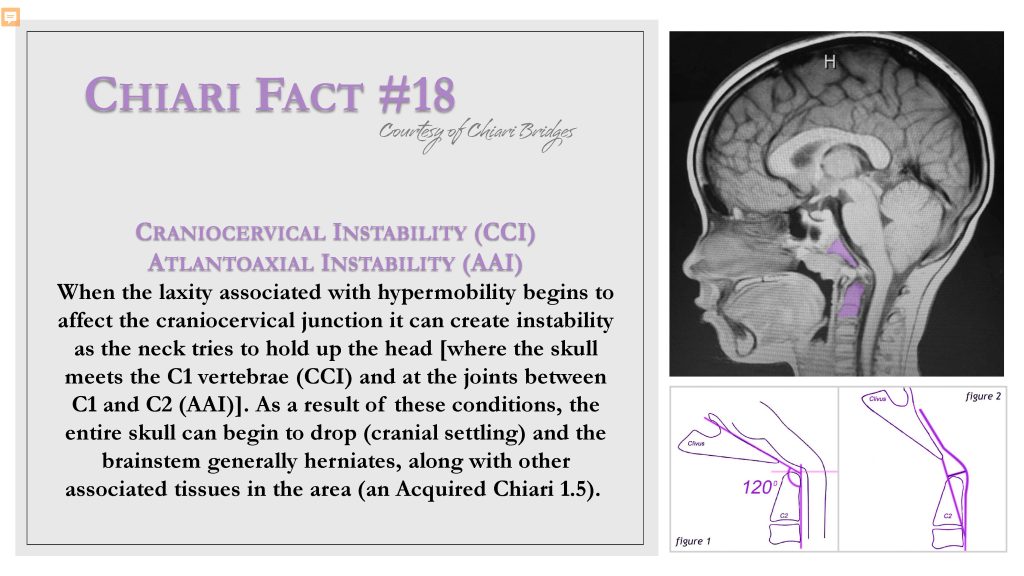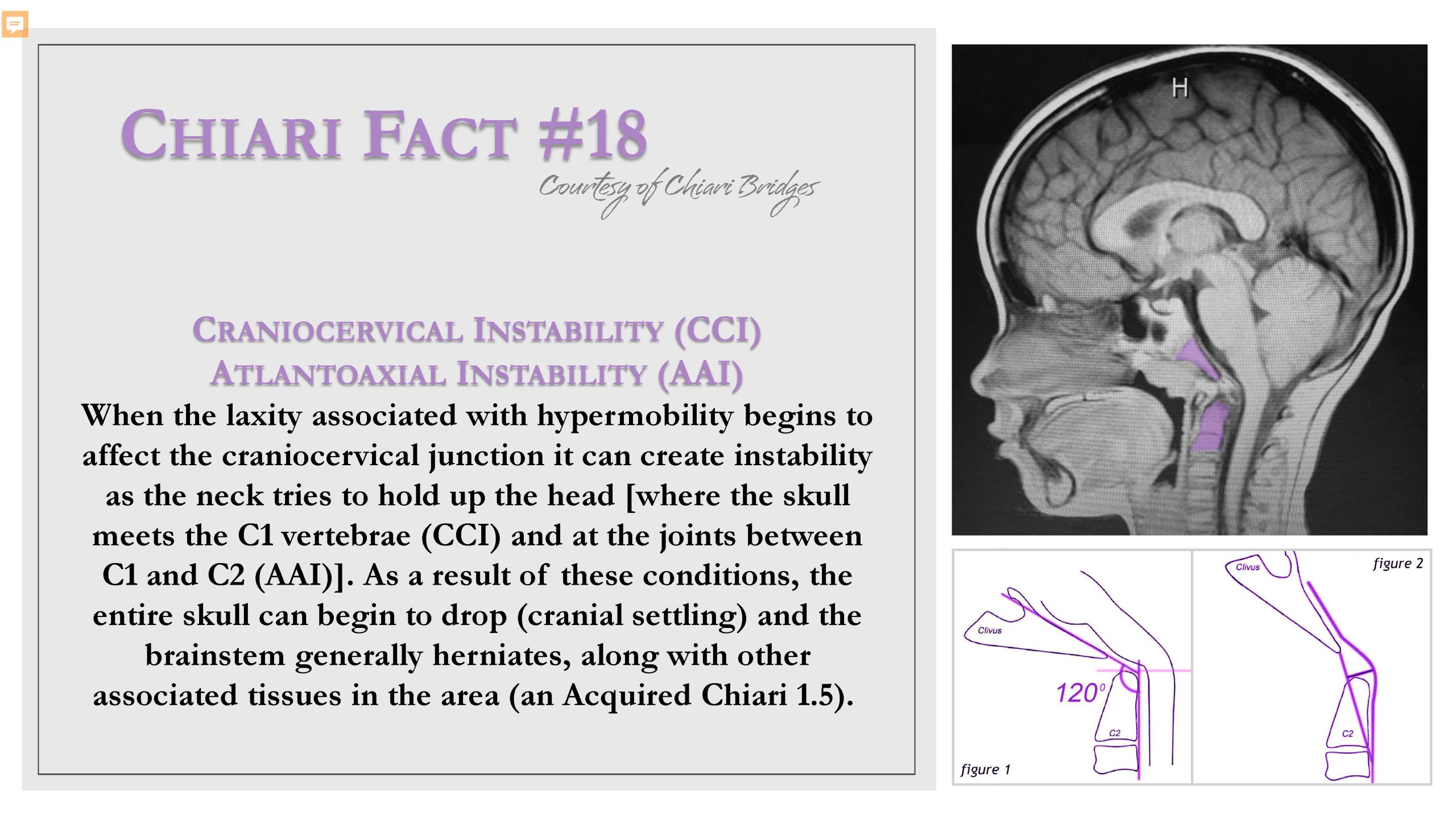Chiari Fact #18

One common theme that you will hear from us at Chiari Bridges is, “Don’t rush into decompression. Make sure all possible etiological/pathological cofactors and comorbid conditions are known FIRST!” And these two conditions help demonstrate why, probably more than any others…
Craniocervical Instability (CCI) and Atlantoaxial Instability (AAI) are two conditions of the craniocervical junction that make a Chiari Malformation “complex.”
CCI is a structural defect and vertical hypermobility (back and forth sliding) of the craniocervical junction (interface between the occipital bone and the 1st and 2nd vertebrae) which can lead to a deformation of the brainstem, upper spinal cord and cerebellum (and associated neurological symptoms) due to compression.
AAI is a ligamentous defect in which there is excessive movement between the C1 and C2 vertebrae (usually rotational) and can result in neurological symptoms and deficits.
Both CCI and AAI can be “comorbid” to Chiari (conditions which are commonly seen together), but both CCI and AAI can also be “pathological” to Chiari, meaning they can cause or attribute to an Acquired Chiari malformation. All three conditions share one distinct etiology (root cause), Heritable Disorders of Connective Tissues (HDCTs), the most common of which are Ehlers-Danlos syndromes (EDS).
To learn more about Etiological/Pathological cofactors and comorbidities:
https://chiaribridges.org/overview-chiari-comorbidities-etiological-pathological-cofactors/
To learn more on CCI:
https://chiaribridges.org/craniocervical-instability-related-disorders/

